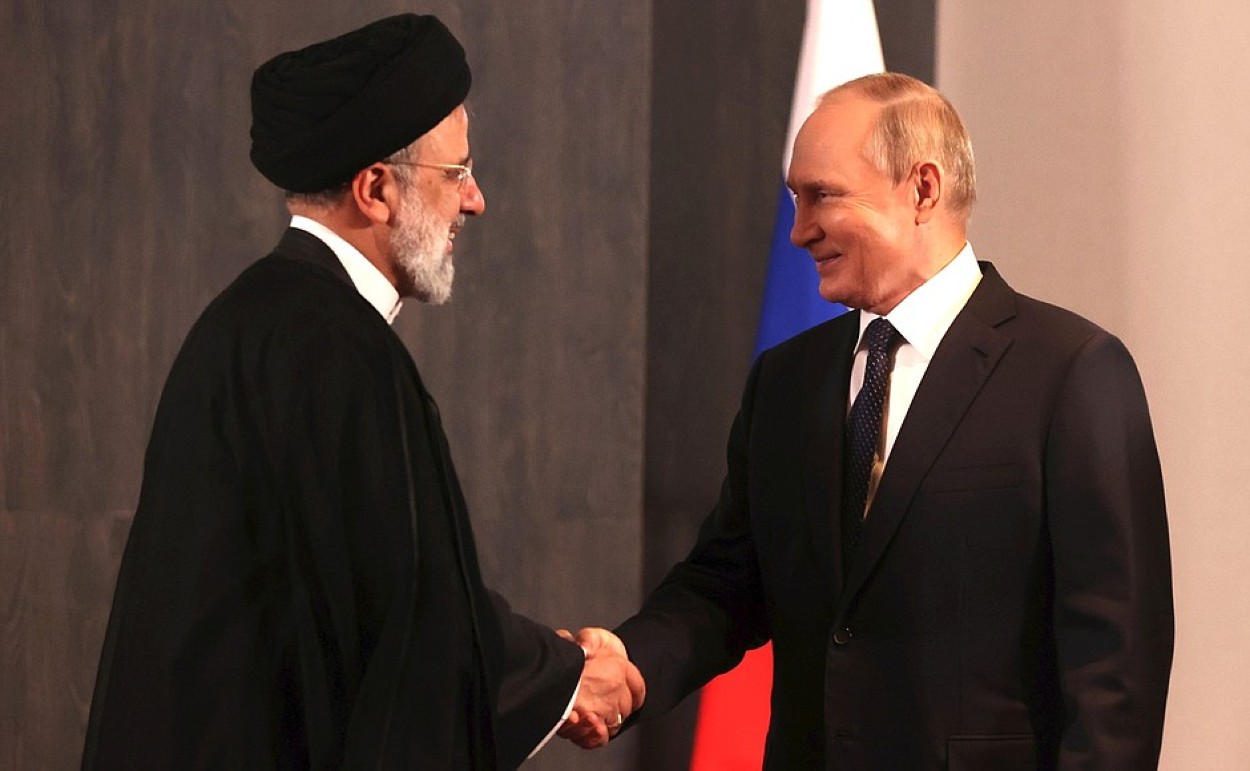Russia and Iran are both reeling under sanctions. It brings them closer. Currently, they are not focusing on side-tracking the sanction but on finding ways their trade routes would remain unaffected by the weapon of sanctions.
International North-South Transport Corridor (INSTC), 7,200 kilometers of sea routes, rail links, and roads connecting Mumbai with St Petersburg, has been under consideration by Moscow and Tehran for the last two decades.
What gains are envisaged by the two countries once the ambitious project is completed?
Firstly, the INSTC will reduce reliance on the Suez Canal which is one of the busiest shipping routes in the world and accounts for about 12 percent of global trade.
Iranian President Ebrahim Raisi believes the corridor “will help diversify global traffic flows significantly.”
Secondly, the two countries will be able to enhance their commercial position in a global context.
Thirdly, the two countries will gradually wriggle out of the sanctions regime, which would be rendered imbecile.
Fourthly, the time taken for goods from Mumbai to reach Moscow would be reduced from 45 days to 15 days.
The 7,200 kilometers of connectivity runs from northern Russia across the Caspian Sea to southern Iran for shipment through the Strait of Hormuz and into the Arabian Sea or the Indian Ocean.
It will be reminded that of late, in some international circles, there is a private debate about how the sword of sanctions can be blunted and made ineffective.
Whether the subject will find broader scope for discussions at various levels of the UN is to be watched.
The debate is on the efficacy of sanctions. It continues to be a vital instrument for imposing economic restrictions.
But the project does not seem to have smooth sailing. The initiative and drive needed to complete the project have not been visible in Moscow or Tehran.
There is no known commitment from any of the three major partners — Russia, Iran, and India — about the funding part of the project. Perhaps the understanding could be that each country would be responsible for building the corridor within their territories.

But on May 17, President Putin signed a US$1.7 billion contract to build the Rasht – Astrakhans rail line.
This project in northern Iran will serve as a critical cargo transit route within the INSTC system. It means Russia will invest in constructing 162 kilometers of rail lines between the Iranian cities of Rasht and Astrakhan.
A notable complicacy in this project is that it goes through Azerbaijan and not through Armenia. While Russia has friendly terms with Armenia, Iran does not enjoy good terms with Azerbaijan because of Azerbaijan’s closeness to Turkey which supplied it with military hardware, especially the Turkish drones, during the war between Azerbaijan and Armenia.
Armenia will resent the proposal of running the INSTC through Azerbaijan. Armenia may reconsider its friendship with Russia if left out of the trade corridor.
The passing of INSTC through Azerbaijan will make Iran and Russia heavily dependent on Baku, considered a loyal ally of NATO member Turkey.
In such a situation, the tension between the two Trans-Caspian states of Armenia and Azerbaijan will remain high, with uncertain consequences for the project.
The tension between Baku and Yerevan may not remain limited to the Nagorno-Karabakh dispute only.
This can involve the South Caucasus region as well. It means that geopolitical challenges for both actors, Moscow and Tehran, are likely to appear.
Though Russia did sign for US$1.7 billion for the construction of the Rasht-Astra rail line, considering Russia’s prolonged involvement in the Ukrainian war, no guarantee can be imagined for the finalization of the project.
Assuming the Ukrainian war threatens Russia’s Black Sea shipping operations, Kremlin will be forced to look for alternatives.
The INSTC has been under consideration by Moscow and Tehran for nearly two decades.
Considering both countries’ financial implications and politically unstable situation, it isn’t easy to accept that the project will be completed in the next four years.
After the recent anti-hijab movement, Tehran’s claim of democracy weakened considerably in the eyes of local commentators. Tehran has let loose the engines of suppression and oppression against its people.
What will be the end of the theocratic regime cannot be predicted by anybody.
The European partners of Tehran had initiated reopening the Iranian nuclear deal after Trump withdrew it, and some progress had been recorded. But the entire exercise was abandoned following the Ayatollah regime’s crackdown on the Iranian masses in the anti-hijab movement.
The role of Russia in pushing the INSTC remains circumspect, owing to its involvement in more than a year of war with Ukraine. Moscow’s interest in the project will diminish if the war protracts.
In conclusion, we may say that considering the ground situation, we do not think that the alternative to Suez Canal should be expected that soon.
Even if the work on building the INSTC continues uninterrupted, it will take the parties not less than five years to complete the project.
Alignments change swiftly in the current times, and five years is too long to wait and still find it feasible.
- KN Pandita (Padma Shri) is the former Director of the Center of Central Asian Studies at Kashmir University. Views expressed here are of the author’s.
- Mail EurAsian Times at etdesk(at)eurasiantimes.com
- Follow EurAsian Times on Google News